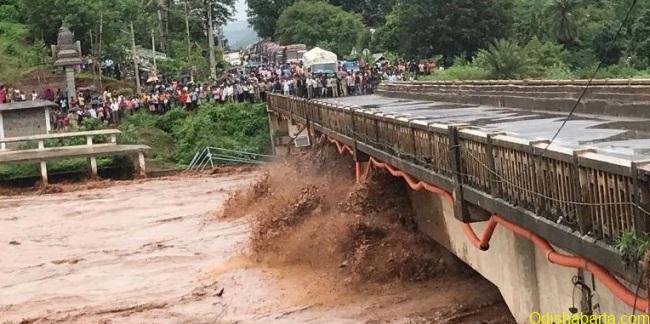Effluent issues still unaddressed by JK Paper Mills in Rayagada

Dr.Badal Tah,Odishabarta
Rayagada, December 20: According to the eco-toxicological studies & impact of JK Paper Mill effluent on crop and non-crop plants of the contaminated site at Chandilli, the said industry is discharging its treated waste effluent into River Nagavalli, which is deadly toxic to aquatic flora & fauna. JK Paper Mills, Jaykaypur is located at the bank of river Nagavali, which is around 12 kms from the district headquarters Rayagada. The effluent canal originating from its Effluent Treatment Plant(ETP) joins the River Nagavalli. The industry collects Nagavalli river water from the upstream of the river for all its requirements. Effluents generated from JK Paper mills after treatment in ETP is allowed to mix with river Nagavali near Jaykaypur at the river’s downstream. As a result, the Nagavali river water is highly polluted.
The effluent sample was collected and physico-chemical analysis was carried out at the sites. Samples from the mid effluent canals were collected and brought to the laboratory for estimations and analyses.
The study, conducted during year 2023 by Abhaya Prasad Tripathy and A. K. Panigrahi, Environmental Toxicology & Biotechnology Laboratory, Department of Botany & Environmental Science, Berhampur University & published in International Journal of Creative Research Thoughts(IJCRT) revealed higher levels of turbidity, hardness and lower level of dissolved Oxygen(DO) in the effluent, indicating toxic nature of the effluent, which warrants for biological treatment.
According to the report, higher turbidity levels will not support the diversity of aquatic organisms as it will reduce the penetration of sunlight and restrict the photosynthetic zone only to the surface layer.
The idea of treatment is to remove all toxicants from the waste and convert into an eco-friendly effluent that can be discharged into natural environment and can be returned to the water cycle. One of the most important points to note was the presence of cadmium, mercury and lead in the effluent. Three years of obtained data indicated that the industry has paid no interest in improving the physicochemical status of the effluent. A significant decrease in DO followed by a significant increase in chemical oxygen demand [COD] and Biochemical Oxygen Demand(BOD) levels of the discharged effluent of the paper mill warrants attention.
Another study by the Department of Chemistry from Berhampur University stated the COD to be on the higher side.
The COD mainly depends upon the organic impurity present in the water 24-26. The paper mill effluents have higher COD due to the presence of degraded cellulose and lignin materials in the effluent. The COD level of Nagavali river upstream and downstream water samples during pre-monsoon, monsoon and post-monsoon was found to be in the range of 26-32, 46-56 and 30-45 mg/lit respectively.
Higher values of COD and BOD were due to higher amounts of organic matter in the effluent. Heavy metals like cadmium, mercury and lead were found in the effluent of the paper mills collected from sites. A significant amount of cadmium was recorded in the collected effluent sample in 2015, 2017 and 2019,.The amount of cadmium in the effluent sample looks very small but significant and toxic and much more than the stipulated guidelines prescribed by the Pollution Control Board (PCB). The company has not made any significant attempt to treat the effluent biologically before discharge to ensure heavy metal-free effluent for discharge into the aquatic ecosystems.
The tribal peoples of Rayagada district not only use the Nagavali river water for agriculture and bathing purposes but also for drinking purpose. It is as well the lifeline of Rayagada people including the bovine population. It is high time that the govt monitoring agencies along with authorities of JK Paper Mills take corrective measures.






